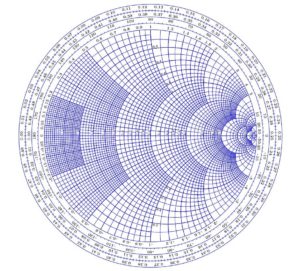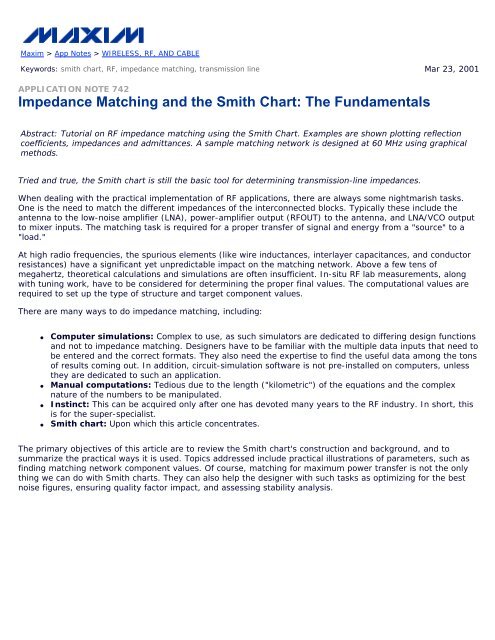

Q: Why do we need to conjugate-match impedances?Ī: There are two related reasons: first, it can be proven analytically that doing so maximizes the transfer of power between the source and load, which is always a good thing second, it eliminates - or at least minimizes - reflections of signal energy from the load back to source due to impedance mismatch and “bumps” at impedance-transition points as shown in Figure 1. In a complex conjugate, the imaginary part has the opposite sign: R – jX ( Figure 1). Q: Remind me: what is “complex conjugate”?Ī: Every source or load has an impedance that can be expressed by a complex number, with a real (R) and imaginary (X) part: R + jX. A color PDF of the Smith Chart is available to download and print for use with pen and paper, or you can use it with your pen-based tablet to draw matching networks.In circuit designs spanning low-frequency audio through high-frequency RF, there’s considerable discussion about impedance matching between components or subcircuits, with various tools such as the Smith chart with is used to facilitate the matching.Ī: Impedance matching means that a signal source sees a load impedance which is the complex conjugate of its own impedance. Examples in the lecture are followed by our exclusive online workbook exercises which integrate a concise review of formulas with interactive calculators to help you work on class exercises. Once you have gotten familiar with the layout of the chart and have some intuition from working with the aid of the software, we can move on to working with the chart more in-depth and perform the calculations manually.

Our exclusive online workbooks combine a review of principles along with exercises utilizing the online Smith Chart web app. The use of transmission lines is also explained with the aid of the software performing the calculations. Next with four basic rules and software written by the instructor, you will be able to create matching networks on the chart almost immediately.

You will start with an overview of how the Smith Chart circles are derived and what they mean, along with a basic orientation of short and open circuit terminations, inductances, capacitance, etc. This course will introduce you to the Smith Chart and how it relates the reflection coefficient to impedances and admittances.


 0 kommentar(er)
0 kommentar(er)
